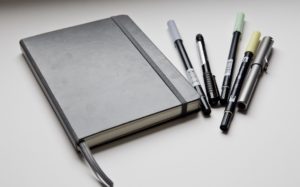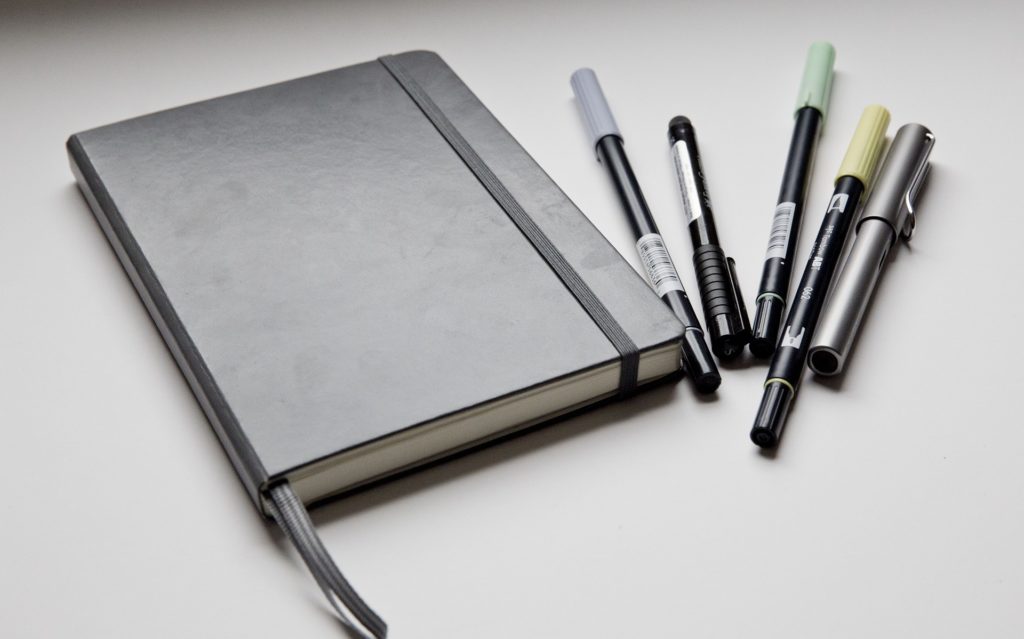Getting Started
Bullet journaling is a popular method of organization and planning that involves creating a customized journal using simple symbols and bullet points to quickly capture and track tasks, events, and notes. If you’re new to bullet journaling and looking to get started, you’ll need to gather some supplies to get you going. In this essay, we’ll take a look at some of the essential bullet journaling supplies that you’ll need to get started, as well as some optional items that can enhance your journaling experience. We’ll also answer some common questions about bullet journaling and provide some tips and tricks for getting the most out of your bullet journal.
What is bullet journaling and how does it work?
Bullet journaling is a flexible system for organizing and tracking your tasks, events, and notes using bullet points and simple symbols. The bullet journal method was developed by Ryder Carroll, a digital product designer, as a way to simplify and streamline the process of keeping track of his to-do lists, appointments, and ideas.
To use a bullet journal, you typically start by creating a table of contents or index page that lists the different sections of your journal. You can then create pages for each of these sections, using bullet points and other symbols to represent different types of information. For example, you might use a dot or dash to represent a task that needs to be completed, a checkmark to indicate that a task has been completed, or an exclamation point to mark an event or reminder. You can also use other symbols, such as arrows or stars, to indicate the priority or importance of a task.
The beauty of bullet journaling is that it is highly customizable, so you can tailor it to your specific needs and preferences. You can use it to track anything from your daily to-do list to long-term goals and projects, and you can easily move or reorganize pages as needed. Many people also use their bullet journals as a creative outlet, adding drawings, doodles, and other decorative elements to their pages.
Essential Bullet Journaling Supplies
To get started with bullet journaling, you’ll need a few essential supplies. Here’s a list of some of the most important items that you’ll need:
A journal or notebook: This is the most important bullet journaling supply of all. You’ll need a journal or notebook to write your tasks, events, and notes in. There are many different types of journals and notebooks to choose from, including hardcover, softcover, spiral-bound, and more. Some popular options for bullet journaling include the Leuchtturm1917, the Moleskine, and the Rhodia Webnotebook.
Pen(s): You’ll also need a pen or pens to write in your journal. You’ll want to choose a pen that writes smoothly and doesn’t bleed through the pages of your journal. Some popular options for bullet journaling include the Pilot G2, the Uni-Ball Signo DX, and the Faber-Castell Grip Pen.
Ruler: A ruler can be helpful for drawing straight lines and creating neat, evenly spaced columns in your journal.
Optional Bullet Journaling Supplies
While the items listed above are essential for bullet journaling, there are also many optional supplies that you might find helpful. Here are a few ideas:
Stickers: Stickers can be a fun way to add some personality and creativity to your bullet journal. You can use them to mark important tasks or events, or just to add a decorative touch.
Washi tape: Washi tape is a decorative masking tape that comes in a variety of colors and patterns.
Stencils: Stencils can be useful for creating neat, evenly spaced grids and other layouts in your bullet journal.
Highlighters: Highlighters can be useful for highlighting important tasks or notes in your journal.
Colored pens: In addition to your main pen, you might want to consider adding some colored pens to your bullet journaling supplies. Colored pens can be useful for adding some visual interest to your journal and can help you to organize your notes and tasks in different ways.
Markers: Markers can be useful for adding some color and visual interest to your bullet journal. They can be particularly useful for creating drawings and doodles.
Pencils: While you’ll likely use a pen for most of your bullet journaling, you might want to keep a pencil on hand in case you need to make any corrections or changes to your journal.
Tips and Tricks for Bullet Journaling
Now that you have a good understanding of the essential and optional supplies that you’ll need for bullet journaling, here are a few tips and tricks to help you get the most out of your bullet journal:
Start with a plan: Before you start filling up your bullet journal, take some time to think about what you want to track and how you want to organize your journal. This will help you to create a clear and logical structure for your journal and make it easier for you to find what you’re looking for later on.
Use your index page: Your index page is an important tool for keeping track of your journal. As you create new pages, be sure to add them to your index page so you can easily find them later on.
Experiment with different layouts: Don’t be afraid to experiment with different layouts and designs in your bullet journal. Try out different ways of organizing your tasks and notes, and see what works best for you.
Keep it simple: The beauty of bullet journaling is that it’s a simple and flexible system. Don’t get bogged down in the details or try to make your journal too complicated. Stick to the basics and let your journal evolve over time as your needs change.
Final thoughts on Bullet Journaling and Necessary Supplies
Bullet journaling is a powerful tool for organizing and tracking your tasks, events, and notes. By gathering the right supplies and following some simple tips and tricks, you can get started with bullet journaling and start reaping the benefits of this flexible and customizable system. Whether you’re looking to track your daily to-do list, plan long-term goals, or just capture your ideas and thoughts, bullet journaling can help you stay on top of your life and achieve your objectives.
Getting Started with Bullet Journaling
Read more DIY stuff!
